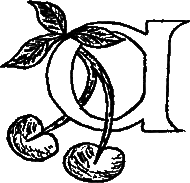
Apricot Folk - Country Dancing
Country Dancing Terms Explained
A Brief History of Country Dancing
Introduction
This is a collection of English country dances which were originally published in a booklet intended as a teaching aid for the Brackley & District Primary Schools country dance festival as well as a similar festival for Northampton Lower Schools. Many of the dances also appear in a similar booklet written for the Oxfordshire Day of Dance.
Sadly, these events have long ceased to be, but the dances are reproduced here in the hope that schools and other folk who are interested in country dancing will find them helpful.
Country dancing is a good social activity and there are many ways of taking part, including community run Barn Dances and Ceilidhs as well as Folk Dance clubs throughout the country. We hope this website will encourage you to have a go!
| FORMATION There are a number of formations which are use in English country dancing. The most common form is the longways set whican consist of just a few couples or as many as wish to take part. In the shorter sets, couples are numbered form top to bottom of the set while in the long sets for as many as will, couples usually number as alternating 1s or 2s and the dance is done in a minor set of 2 couples, each of which progresses along the line to start the dance with a new couple |
 |
 |
| typical longways for a set number of couples | longways for as many as will | |
| The next most common formations are circles and
squares. There are many other formations most of which are variations of the above, but none of them are used in this guide. |
 |
 |
| a circle for as many as will | 4 couple square set |
|
FITTING THE DANCE TO THE MUSIC Most Western music, including the folk music used to accompany English country dancing is based on 8 bar sequences. There are 2 dance steps for each bar of music, so most movements use multiples of 4 steps. For example, a dosido will consist of 4 steps forward, followed by 4 steps back. A right hand turn will take 8 steps all the way round and promenade may last for 16 steps. The majoriy of folk tunes used for country dances consist of 32 bars. This made up of 8 bars which is repeated (known as the A music), followed by another 8 bars which is repeated (known as the B music. Dance instructions are written using the notation A1, A2, B1 & B2 to show how the moves fit the music. Dances needing 48 bar length tunes will also havd C1 & C2. It follows that any 32 bar tune will fit any 32 bar dance providing it is played the correct number of times to fit the number of dancers. Therefore a 32 bar tune played 4 times through (4 x 32) will fit any 32 bar dance for 4 couples Longways dances for as many as will can be played any number of times through, to suit the dancers energies WHAT KIND OF STEPS TO USE This depends on the time signature (or rhythm) of the music. Most dances use either 2/4, 4/4 or 6/8 2/4 or 4/4 tunes played at a speed of about 110 - 120 beats per minute have a smooth rhythm and areknow as reels and are best danced using a walking step. 6/8 tunes played at a similar speed are know as jigs and can be wallked or skipped (children like to skip). 4/4 tunes played at a slightly slower speed are known as polkas and can be walked or done to a polka step (RLR hop, LRL hop). 2/4 or 4/4 tunes played quite slowly are known as hornpipes and need to be danced with a step-hop (R-hop L-hop, R-hop, L-hop). Another fairly common time signature is 3/4 which is, of course, a waltz. (There are none in this guide) . |
This would be played twice through This would be played twice through A complete 32 bar dance would need 2 A music followed by 2 B music This is written in the dance ntes as A1, A2, B1 & B2 |
 Headington Quarry folk dance band |
|
 Headington Quarry folk dancers |
|
 Aynho C E School dancing at the Brackley & District Primary Schools festival in 1985 | |